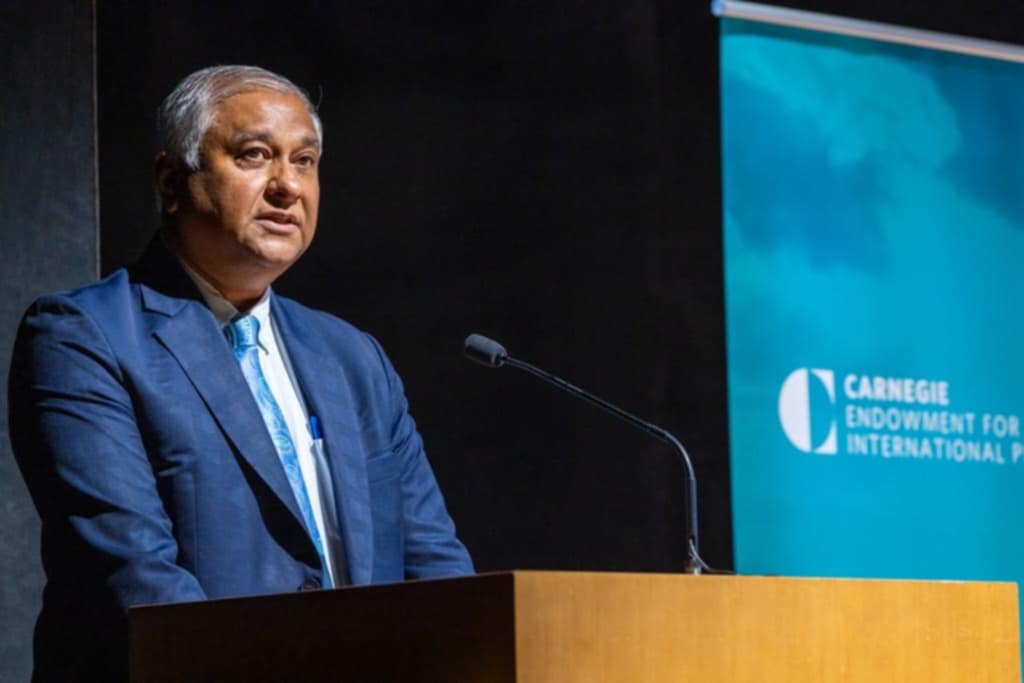By Dr Satyendra Prasad, Senior Fellow – Carnegie Endowment for International Peace and Climate Lead for Abt Global
The just concluded COP29 in Baku, Azerbaijan was one of those big moments that will shape the Pacific’s well being for a decade if not more.
Climate crisis envelops every dimension of Pacific’s existence. Failing root-crop yields across PNG highlands because of rising temperatures, disease outbreaks on cattle farms in Vanuatu, roads degraded by storm surges on Tuvalu, homes and livelihoods destroyed across the Pacific by cyclones, lives lost because of unseasonal outbreaks of dengue in Samoa and RMI, dramatic increases in gender violence following climate catastrophes across the region, unacceptable levels of school days lost for our children because of floodings and water shortages. For the Blue Pacific – this list is endless.
Did the International community fail the Pacific?
Dubbed as the finance COP – this meeting between countries across the World was to agree and decide the level of finance that will be made available to developing countries.
Way back in 2009, the COP process had agreed that the level of financing available to developing counties would be US$100 billion annually. This was woefully short of what was needed even then and this level of funding was not delivered until more than a decade late.
I pay me deep respect to the Pacific’s leaders – from Pacific Islands Forum Chair, Prime Minister Sovaleni, to PIF Secretary General, Baron Waqa to Pacific ‘s ministers, DPM Biman Prasad, Cedric Shuster of Samoa and all other Ministers, to our fantastic civil servants, our inspirational civil society representatives, our scientists and researchers. They were tireless and persistent. They were graceful but forceful. The region owes them its deepest gratitude.
In my deeply personal view, this COP was perhaps the one that was most captured by fossil fuel interests. Getting any strong outcome would have been an achievement. In spite of this there is so much the COP has delivered.
But where ambition and commitment collided most tragically was on the new finance goal. Some 30 hours into overtime, the Azerbaijan presidency gavelled the US$300 billion figure. A modest real increase from the US$100 Billion agreed to nearly 15 years ago but woefully short of the US$1trillion plus ask that the developing countries made.
The Pacific and small states alone need to be spending anywhere between US$30-US$50 billion annually if they are to build climate proofed futures for their communities. This level of financing will simply not flow from the US$300 billion that needs to be shared between large developing countries such as Indonesia and India and middle-sized countries such as Kenya and Uganda and the small island states.
Despair is not an option
Pacific’s leaders and its communities need to look beyond COP 29- to Brazil and hopefully Australia thereafter – the next hosts of COP.
We know that there is a growing restlessness across the region. This is understandable.
The regions multibillion dollar tourism industry on which tens of thousands of families are dependent sits barely a metre or two above sea level. Its vital tuna resource on which the livelihood of whole states such as Kiribati rest are at risk because of rising ocean temperatures. From the highlands of PNG to the flatlands of FSM – despair is simply not an option.
Holding partners to account
Post COP29, the Pacific would do very well to focus its attention on holding countries to account.
Pacific’s leaders can ask their partners to demonstrate in quantifiable ways that their own climate finance commitments to the region are being trebled in line with COP29 commitments.
Pacific’s leaders can hold multilateral institutions to account similarly. It can ask at the regional level for the Green Climate Fund, the ADB and the World Bank to demonstrate that their year-on-year increases are in line with COP29 agreement. The focus and pressure on delivering on the COP29 package must be generated in this way. The Pacific must have a razor-sharp focus on this.
Done well the Pacific can secure its share of the modest but insufficient increase in climate finance agreed at COP29.
Done poorly, it will mean that other developing counties will benefit disproportionately and at the expense of the Blue Pacific – the World’s most climate vulnerable region by a long mile.
Raising the Pacific’s game
It is also equally true that the Pacific will need to overcome its own internal challenges. Too often its development partners tell the Pacific that the region does not have investment ready programmes. Too often its development partners tell the region, that its internal capacity to programme climate funds and account for these investments are inadequate.
The region faces an uphill task ahead. It needs to ramp up its ability to design, deliver and monitor multiple climate programmes concurrently. This must become an important priority for the region if it is to deliver an adaptation and mitigation response on the scale that is needed. This is even more important in order to maintain credibility for the region’s quest for vast increases in climate finance from the floor of US$300 billion.
Salvaging the 1.5 Celsius goal
Everything the Blue Pacific does will matter little if the 1.5 Celsius target is lost. Baku has failed to secure this. The WMO data shows that the World is closer to a path of 3 Degree Celsius temperature increase. At those temperatures, a catastrophic and deeply unstable future lies ahead for the island states of the Pacific.
The Pacific will be advised to seek far more ambitious commitments by rich countries and large developing states to reduce their greenhouse gas emissions. The Pacific will need to work with these countries to build up a clear pathway to delivering on a US$1trilion plus climate finance package by 2030 – not 2035.
The work for Pacific’s leaders, its civil society is so well cut out. Their options are simple and straightforward. Fight for the 1.5 Degree Celsius pathway with renewed determination or lose it all.















